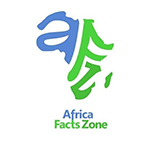Namibia’s Skeleton Coast’ A Place like No Other on Earth

Namibia’s Skeleton Coast is a place like no other on Earth.
Stretching along the country’s northern Atlantic coastline, this remote and otherworldly region is a blend of stark desert, crashing waves, and haunting shipwrecks.
It’s a place that defies expectations and leaves a lasting impression on all who visit.
The Desolate Beauty of the Skeleton Coast
The Skeleton Coast is a land of extremes. The desert dunes rise hundreds of feet from the shore, creating a stark contrast with the pounding surf.
The landscape is a study in muted tones – grays, browns, and blacks predominate, with the occasional splash of color from the neon-pink flamingos that dot the shoreline.
Also Read: Discovering Amboseli National Park
Despite its harsh and unforgiving nature, the Skeleton Coast is home to a surprising array of life. Desert-adapted lions, hyenas, and other predators roam the beaches in search of seals and other maritime prey.
Elephants wade into the waves, while 11 species of shark patrol the offshore waters. It’s a place where life clings to existence in the most unlikely of places.
A Treacherous Coast for Sailors
The Skeleton Coast earned its name from the countless shipwrecks that dot its shores.
Over the centuries, hundreds of vessels have died on the jagged reefs and treacherous currents that characterize this coastline.
The skeletons of these ships, along with the bones of their crews, litter the beaches and dunes, serving as a grim reminder of the power of the sea.
One of the most famous wrecks is that of the Dunedin Star, a British freighter that ran aground in 1942 while carrying munitions to Egypt.
Despite a dramatic rescue effort that saw one of the rescue ships itself run aground, all 63 crew members were eventually brought to safety.
Other wrecks were not so lucky, with the remains of 12 headless skeletons found in 1860, along with a note in the sand directing rescuers to a river 60 miles to the north.
Also Read: Rift Valley Lakes From Naivasha to Nakuru
A Surfer’s Paradise
Despite its reputation for danger, the Skeleton Coast has become a mecca for surfers seeking out the perfect wave.
The cold Benguela Current that flows along the coast creates ideal conditions for surfing, with several spectacular breaks attracting a small but dedicated following.
Surfers come from around the world to ride the waves of the Skeleton Coast, which can reach up to 20 feet in height.
They share the lineup with seals, dolphins, and other marine life, respecting the “locals” and their intimate knowledge of the waves.
Surfing in the middle of a vast and desolate landscape, with nothing but sand dunes and the occasional shipwreck as a backdrop, is a surreal experience.
The Allure of the Skeleton Coast
For all its harshness, the Skeleton Coast exerts a powerful pull on those who visit. It’s a place that challenges preconceptions and forces visitors to confront the raw power of nature.
Whether it’s the haunting beauty of the shipwrecks, the thrill of surfing in a remote and untamed landscape, or the sheer wonder of seeing desert-adapted wildlife, the Skeleton Coast leaves an indelible mark on all who experience it.
It’s a place that feels like the end of the Earth, a final frontier where civilization gives way to the untamed wilderness.
And yet, it’s also a place that reminds us of our own insignificance in the face of the vast forces that shape our planet.
The Skeleton Coast is a humbling and awe-inspiring destination, a place that challenges us to see the world in a different way.
FAQs
What is the Skeleton Coast?
The Skeleton Coast is a remote and desolate stretch of coastline in northern Namibia, known for its stark beauty, shipwrecks, and desert-adapted wildlife.
How did the Skeleton Coast get its name?
The Skeleton Coast earned its name from the countless shipwrecks that dot its shores, along with the bones of their crews and the animal skeletons that litter the beaches.
What kind of wildlife can be found on the Skeleton Coast?
The Skeleton Coast is home to a surprising array of desert-adapted wildlife, including lions, hyenas, elephants, and 11 species of shark. It’s also a popular spot for seals and flamingos.
Is it possible to surf on the Skeleton Coast?
Yes, the Skeleton Coast has become a popular destination for surfers, thanks to the cold Benguela Current that creates ideal conditions for surfing. Several spectacular breaks attract surfers from around the world.
How do you get to the Skeleton Coast?
The Skeleton Coast is accessible by 4×4 vehicle from the nearby town of Swakopmund, or by scenic flights that skim low across the sea and sand. It’s a remote and isolated region, with very few signs of human habitation.
What is the climate like on the Skeleton Coast?
The Skeleton Coast has a harsh, arid climate, with fog and strong winds being common. Temperatures can range from freezing at night to scorching during the day.
Why is the Skeleton Coast so alluring to visitors?
The Skeleton Coast exerts a powerful pull on visitors because of its stark beauty, haunting history, and sense of remoteness. It’s a place that challenges preconceptions and forces visitors to confront the raw power of nature.
In conclusion, Namibia’s Skeleton Coast defies easy description. It’s a land of extremes, where the desert meets the sea in a clash of raw power and stark beauty.
It’s a place that has claimed countless lives over the centuries but also nurtures life in the most unlikely of ways.
For those who visit, the Skeleton Coast leaves an indelible mark, a reminder of nature’s enduring power and human existence’s insignificance in the face of such vast and untamed forces.





